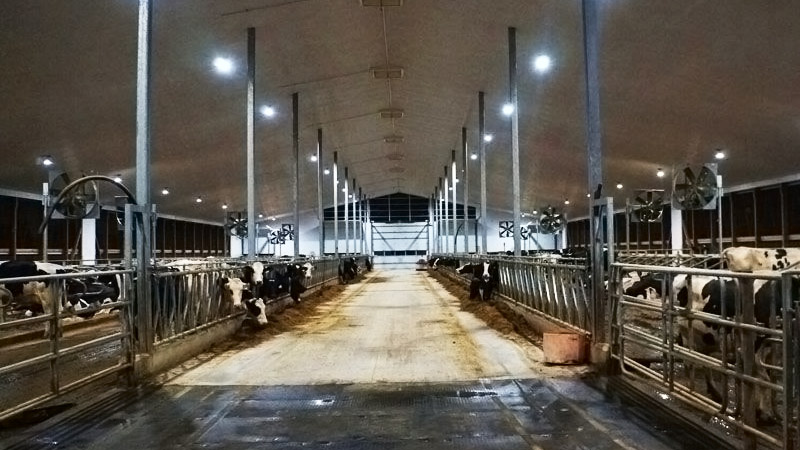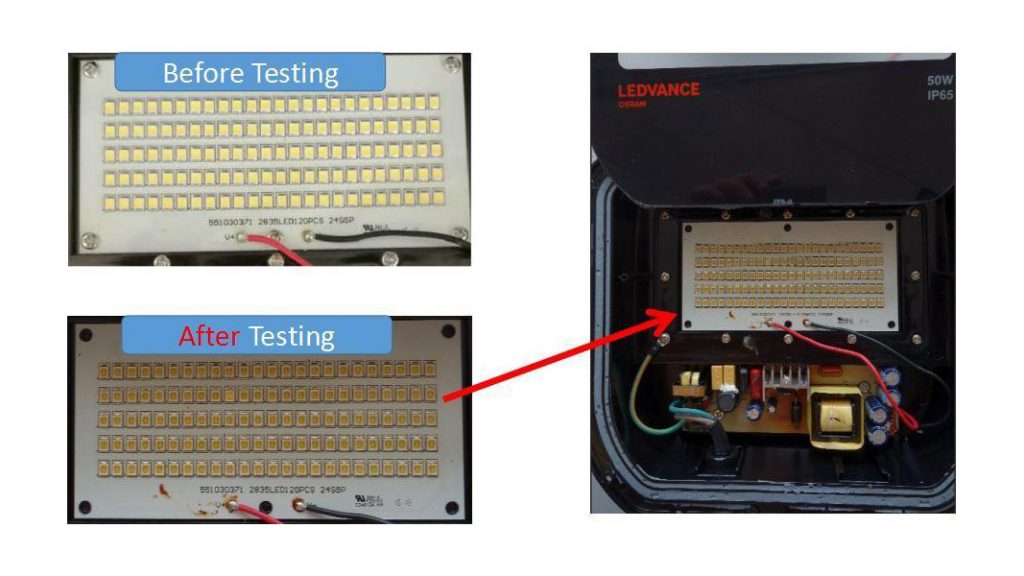LED Long Day Lighting Increases Milk Production by 8%
By using LED lights, automated sensors, and an automated control system, researchers at Michigan State University created a long day lighting (LDL) system at Wing Acres Dairy and solved the technical difficulties that were faced by Michigan dairies, leading to less productivity.

By using LED lights, automated sensors, and an automated control system, researchers at Michigan State University created a long day lighting (LDL) system at Wing Acres Dairy and solved the technical difficulties that were faced by Michigan dairies, leading to less productivity.
Researchers from the school’s Biosystems and Agricultural Engineering Department worked with the Michigan Milk Producers Association (MMPA) to study the implications of LED-based LDL on milk production, and the study indicates an 8% increase over the course of a year.
What is long day lighting?
LDL is a system that increases the daily light photoperiod for milk herds to 16-18 hours at intensity of 15-20 feet candles of light, that is followed by a dark period of 8-6 hours of 3 feet candles. Different researches over the last three decades have shown that LDL has positive impact on milk production among dairy cows.
However, dairy farmers in Michigan were not been able to attain the full benefits of LDL due to some technical problems in measuring and maintaining the light intensity and were failing to appropriately control the lighting system.
LED long day lighting project at Wing Acres Dairy
Biosystems and Agricultural Engineering Department researchers at Michigan State University initiated a LDL project at Wing Acres Dairy in cooperation with the Michigan Milk Producers Association (MMPA). The objective of the project was to study the technical difficulties faced by the dairies. The researchers used LED lights, automated sensors, and an automated control system, and created a LDL system, which eventually resolved the technical problems.
Impact of LED LDL project
After the project could successfully resolved the problems, Wing Acres Dairy in Barry County saw 8% increase in milk production. Also, the dairy farmers found that the cows in their milking herd have become more docile and less agitated.
Weather conditions and farm operational practices were examined to find out if the increased in milk production could be attributed to the LDL system. After all finds of examinations, the researchers concluded that the increased milk production was due to the LDL system.
So the project proved that by maintaining consistent light intensity and controlling lighting system milk production can be increased. An accurate automated control system is the main factor for the success of LDL lighting management. The toughest challenge of the project was to make the sensors, monitors, programming and the various components work together to make adjustments automatically.
Moreover, by replacing metal halide lights in the barn with LED lights, the dairy owners expect to reduce lighting expenses by 50%. And, based on increased milk production and with exceptional milk prices in 2014, a payback of just in one year is likely for the whole project.
LDL research has shown better production when herds are exposed to 15-20-fc of light for 16-18 hours, followed by 6-8 hours with light levels below 3 fc.
The dairy has noted several additional benefits to LED lighting. With MH systems, separate fixtures were required for the low-light period. But the LED fixtures can be dimmed to deliver the below 3 fc level required. Moreover, the LED fixtures are more reliable in the relatively harsh environment and will require much less frequent maintenance, which disrupts the dairy operation. Anecdotally, the farmer also said that the cows seem more docile after the retrofit.






